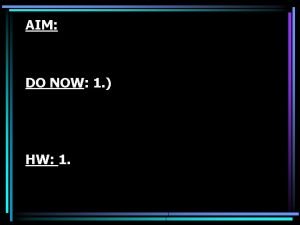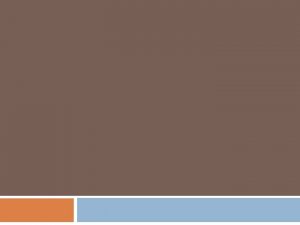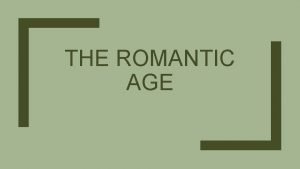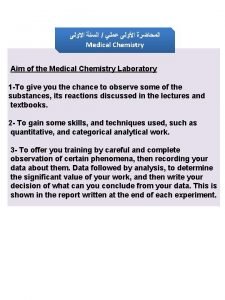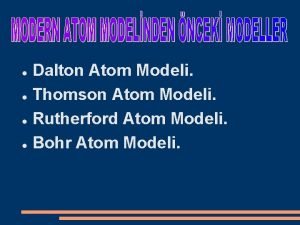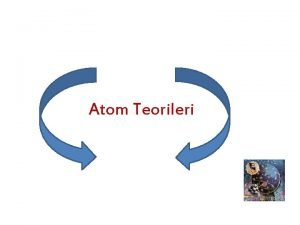Aim What is an atom DO NOW Identify









- Slides: 9

Aim: What is an atom? DO NOW: Identify X, Y, and Z as a mixture, compound or element. DRAW IMAGES

The Atom 1) The atom is the basic unit of matter. 2) Each element is composed of atoms that have different number subatomic particles compared to another element

Atomic Structure A) Nucleus 1)Proton 2)Neutron B) Cloud 3) Electron

The Three Fundamental Subatomic Particles Name Symbol Charge Proton p+ 1+ Mass (amu) 1. 007 Neutron n 0 0 1. 009 electron e- 1 - 5. 486 x 10 -28 Mass (g) Location 1. 673 x 10 -24 1. 675 x 10 -24 9. 109 x 10 -28 Nucleus Outside nucleus

Nucleus 1) Contains most of the mass of the atom; very dense 2) Has a positive charge (nuclear charge)

Proton • Has a positive charge • Atomic # = # of protons only • Atomic mass or mass # is both neutron and proton • The number of protons is called the nuclear charge

Proton cont. • In a neutral atom, the # of electrons = # of protons • The protons “hold the electrons in the atoms” • The # of protons in an atom is specific to only that element; # of protons determines type of element

Neutron • Has no charge; neutral • Has a mass of 1 atomic mass unit; the neutrons along with the protons make up most of the mass of the atom.

Sample Problems 1. Lithium has 3 protons and 4 neutron. What is the mass number? Mass # = # of protons + # of neutrons Mass # = 3 + 4 Mass # = 7 2. An atom has a mass number of 9 and has 5 neutrons. How many protons does it have? Mass # = # of protons + # of neutrons 9 = # of protons + 5 # of protons = 4
